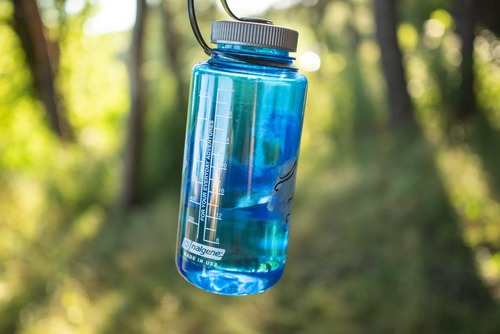Editor’s Note: Despite having a smaller marketing budget than its competitors in the water bottle space, Nalgene continues to experience growth by relying on its scientific heritage, digital marketing tactics and a flexible approach. Sister pub Multichannel Marketer spoke with Nalgene’s Director of Marketing Eric Hansen about its marketing budget, Amazon ad success and more.
Nalgene is one of the first reusable water bottle brands, launching in 1949. It is the lone consumer brand within business-to-business science technology company Thermo Fisher Scientific, a $40 billion annual run rate company.
This longstanding heritage has allowed the brand to continue to grow sales in an increasingly crowded water bottle space, said Eric Hansen, Nalgene’s director of marketing.
Hansen recently chatted with Multichannel Marketer about its marketing strategy:
Multichannel Marketer: The water bottle landscape has changed a lot in the past 10 years. How are you guys dealing with that type of competition?
Hansen: Yeah, it’s crazy. It’s changed a couple times in the last couple of decades. One, because of BPA, and then, steel insulated came into the game. But what allows us to constantly remain relevant and on shelf is that we’re a little bit unique. We’re made in USA. And we’re the only plastic brand that hasn’t lost shelf space. If you go back even 10 years, it was like 80% of the shelf space was plastic, 20% was metal. Now that’s more like 50-50. So a lot of that plastic shelf space has gone.
But because of our brand and our history and our credibility, we haven’t really lost that much shelf space. So that’s what allowed us to make it through this big wave of steel insulated. It’s just the fact that we’ve been around forever. We’ve got the credibility. We’re made in USA. And for the most part, outside of a few retailers here and there, we’ve been able to keep our shelf space.
MM: Are you guys still growing?
Hansen: Yep, we grow every year.
MM: How has Stanley specifically impacted you guys?
Hansen: It’s funny, we’ve talked about this for years. The steel insulated bottle — it’s not a one for one, right? You’re not either going to have a stainless steel insulated or a plastic water bottle. The use cases for those is so different. A lot of times we find that somebody who has a Stanley also has a Nalgene bottle. You’re not taking your Stanley to the gym and putting it in the holder. You’re not taking it on a hike; You’re not taking it to soccer. You are taking it to the office, maybe to school. The use cases are different enough that we’re not a one-for-one substitute. I think that’s also part of the reason we’ve been able to hang on the shelf space too, is it’s not an exact substitute for one or the other.
And the other thing too is, especially as it relates to your kids or whoever losing a bottle, you spend 50 bucks on a Yeti or a Stanley or even $60 in some cases, if you lose it, you’re a little less apt to replace it. Whereas if you lose this, this is 15 bucks. That’s another one of the benefits that we’ve had is that steel insulated is just three to four-times the cost of ours that if you lose it, I think people are less apt to buy another one versus ours. If you lose ours, you just buy another one.
Read the full piece in Multichannel Marketer.




 Network
Network

